The May 2015 S&P Case Shiller home price index shows a seasonally adjusted 4.9% price increase from a year ago for the 20 metropolitan housing markets and a 4.7% yearly price increase in the top 10 housing markets. The year over year change is pretty much the same as April using the seasonally adjusted data. Home prices are still climbing over double the rate of inflation. The U.S. National Home Price Index increased 4.4% in May 2015. Since the price low of March 2012, the 10-City composite index has increased 32.5% and the 20-City composite index has increased 33.5%. From the housing bubble 2006 peaks, prices are now only down about 13-15%.
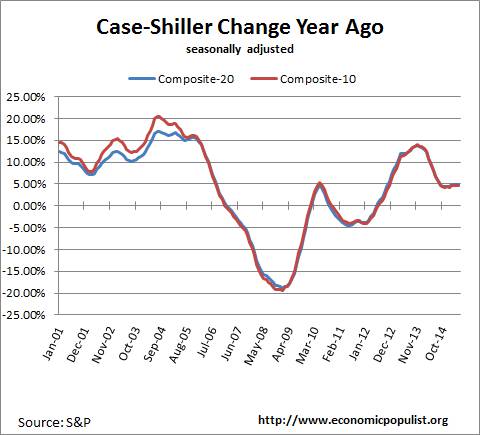
Below are all of the composite-20 index cities yearly price percentage change, using the seasonally adjusted data. San Francisco home prices increased 9.7% from a year ago and Denver Colorado increased by 10.0%. No composite-10 or composite-20 annual price gains are negative using the seasonally adjusted data and tweleve were above 4% annual price increases. Clearly prices are not affordable and S&P notes how the first time home buyer is being squeezed out by 20% down payments. The press release also said the Case-Shiller price index is more upbeat than other housing indicators.
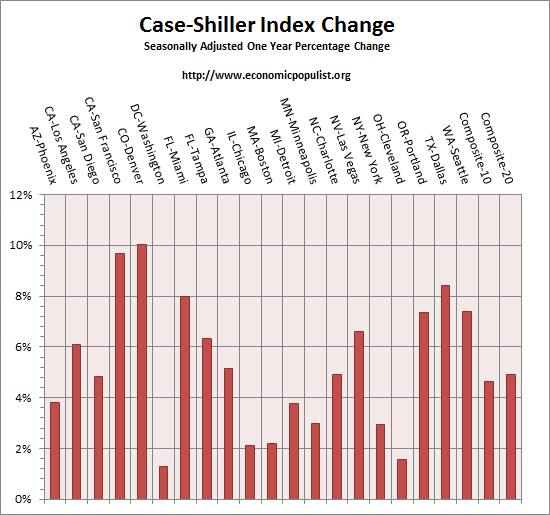
S&P reports the not seasonally adjusted data for their headlines. Housing is highly cyclical. Spring and early Summer are when most sales occur. For the month, the not seasonally adjusted composite-20 percentage change was 1.1% whereas the seasonally adjusted change for the composite-20 was -0.2%. The not seasonally adjusted composite-10 saw a 1.1% increased from last month, whereas the seasonally adjusted composite-10 showed a -0.2% decrease. The below graph shows the seasonally adjusted monthly percentage change. We think this is much more valid and notice the (finally), a few monthly declines in prices when using the seasonally adjusted housing data.
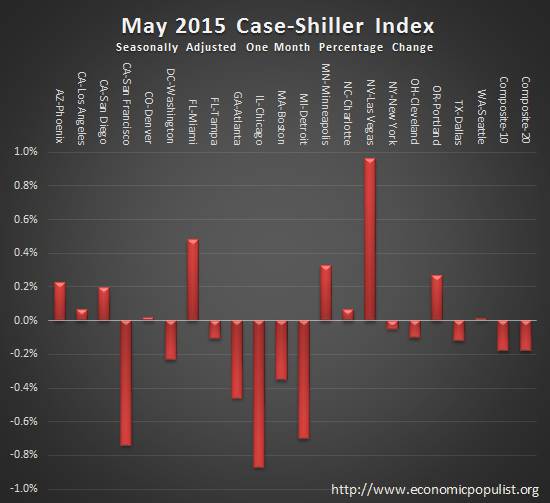
Prices are normalized to the year 2000. The index value of 150 means single family housing prices have appreciated, or increased 50% since 2000 in that particular region. Case-Shiller indices are not adjusted for inflation. Below are the seasonally adjusted levels for the month.
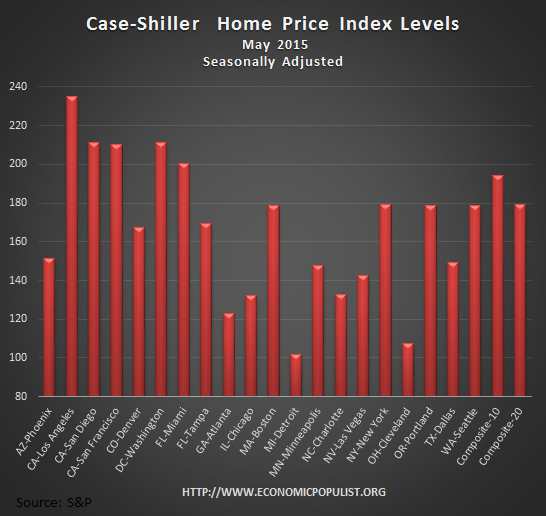
S&P publishes a national index for home prices which has increased 4.4% for the year. S&P also comments on home prices versus inflation Below is a quote from S&P:
Nationally, single family home price increases have settled into a steady 4%-5% annual pace following the double-digit bubbly pattern of 2013. Over the next two years or so, the rate of home price increases is more likely to slow than to accelerate. Prices are increasing about twice as fast as inflation or wages. Moreover, other housing measures are less robust. Housing starts are only at about 1.2 million units annually, and only about half of total starts are single family homes. Sales of new homes are low compared to sales of existing homes.
With wages still stagnant one has to wonder how prices are just climbing back up to bubble years. Of course inflation has increased over the past decade as well.
To Season or Not to Season, That is the Question:
The S&P/Case-Shiller Home Price Indices are calculated monthly using a three-month moving average and published with a two month lag. Their seasonal adjustment calculation is the standard used for all seasonal adjustments, the X-12 ARIMA, maintained by the Census. The headlines and Case-Shiler's report uses the not seasonally adjusted data. Not seasonally adjusted data can create more headline buzz on a month by month basis due to the seasonality of the housing market. S&P does make it clear that data should be compared to a year ago, to remove seasonal patterns, yet claims monthly percentage changes should use not seasonally adjusted indices and data. This seems more invalid than dealing with the statistical anomalies the massive housing bubble burst caused. Below is the seasonally adjusted and not seasonally adjusted Composite-20 Case-Shiller monthly index, for comparison's sake.
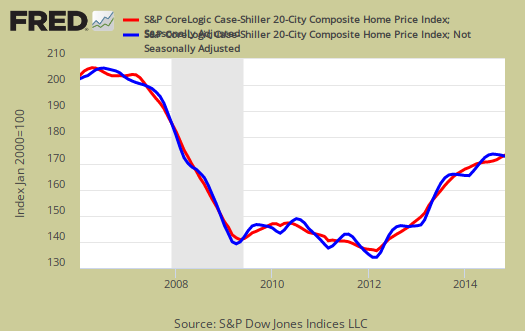
For more Information:
S&P does a great job of making the Case-Shiller data and details available for further information and analysis on their website.
Here is our Case-Shiller past overviews as well as the overviews of residential real estate statistics.

Recent comments